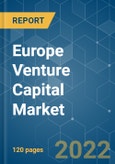2020 was a challenging year for people, companies and countries across Europe. European venture capital did not escape the effects of COVID-19 but responded with characteristic strength. The industry secured another year of investment growth as funding for European start-ups and scale-ups rose for the eighth year running to Euro 12 billion. Moreover, as this report clearly illustrates, investment flowed across the continent - from London, Paris and Berlin to Catalonia, Copenhagen and Dublin. Europe is packed with entrepreneurial talent and populated throughout with hubs that are driving start-up excellence.
European VCs have raised more in 2021 to date than in any previous year. European VCs have raised Euro 14 billion in new funds in 2021, compared to Euro 12.6 billion in full year 2020, a previous record. Despite economies falling into recessions, unemployment rising drastically across numerous different sectors and multiple stimulus measures being announced by pretty much all of the European nations, venture deal value and activity hasn’t really reflected impacts of COVID-19.
Key Market Trends
United States' role in VC rounds in Europe
American interest in European companies isn’t new. The pandemic doesn’t seem to have had an impact on US investors’ interest in VC deals in Europe. Deals involving US investors reached a value of Euro 16.1 billion through Q3, putting 2021 on track to surpass the record Euro 19.1 billion set in 2020. American investment in European VC rounds has increased significantly over the last decade. Company valuations tend to be lower in Europe compared to the US and American VCs are likely also attracted by the potential for European companies to then enter and scale in the lucrative US market.
Capital is flooding into the ecosystem from more and more sources, including from non-traditional investors via sovereign wealth funds, pension funds, as well as high-net worth individuals. Data suggests the overall percentage of deals with U.S. participation in Europe is rapidly increasing and reached record levels in 2021. At the same time, the percentage of deals with investors from Asia is on the rise too, despite more stringent regulatory barriers.
More money is flowing into European tech than ever, and it’s increasingly coming from venture capital’s elite U.S firms. European startups are likely to receive a record USD 34.3 billion in investments in 2021. The trend shows that American investors will account for nearly a third, of the total amount invested in European VC. For the U.S. investors, there’s a clear financial incentive to “swoop in”. On average over the past year, one dollar’s worth of equity in a European startup in a Series A funding round would have cost USD 1.60 in the U.S. for a comparable share.
Fintech Dominance in VC rounds in Europe
Europe’s fintech startups have continued raising vast amounts of capital over the lockdown period, attracting around Euro 2.86 billion in investment between March and mid-August. Consumer fintechs are carrying the sector in terms of funds raised. This segment actually had a record quarter in Q2 thanks to a number of mega-rounds. Analysts are particularly bullish on this sub-sector, expecting the market to grow incrementally thanks to increased digital adoption. UK FinTech startups attracted more capital and completed more deals than the rest of the top 10 European countries combined.
Europe’s high pre-existing level of financial development can partly account for the relatively smaller reach of fintech payment and lending activities compared to some other regions. But fintech activity is growing rapidly. Digital payment schemes are expanding within countries. Automated lending models are developing but remain limited mainly to unsecured consumer lending. While start-ups are pursuing platform-based approaches under minimal regulation, there is a clear trend for fintech companies to acquire balance sheets and, relatedly, banking licenses as they expand.
Wealthtech saw a record year for global investment in 2020. the start of 2021 saw a 45% funding drop in Europe. Despite users flocking to trading apps. The payments sector is on track to exceed last year’s record investment. It’s also worth noting that this area is proving particularly popular with incumbents and their venture arms. One sub-sector worth keeping an eye on is insurtech. Despite not receiving much attention, insurtechs made up nearly 20% of all fintech rounds in Europe in Q1 2021.
Competitive Landscape
Europe Venture Capital market is highly competitive, with the presence of both international and domestic players. The market studied presents opportunities for growth during the forecast period, which is expected to further drive the market competition. With multiple players holding significant shares, the market studied is competitive.
Additional Benefits:
- The market estimate (ME) sheet in Excel format
- 3 months of analyst support
This product will be delivered within 2 business days.
Table of Contents
Companies Mentioned (Partial List)
A selection of companies mentioned in this report includes, but is not limited to:
- 360 Capital
- AAC Capital
- Accel Partners
- Active Venture
- Acton Capital
- Adara Ventures
- Atlantic Labs
- Atomico invests
- Axon Partners Group
- BGF invests
- Bonsai Venture Capita*










